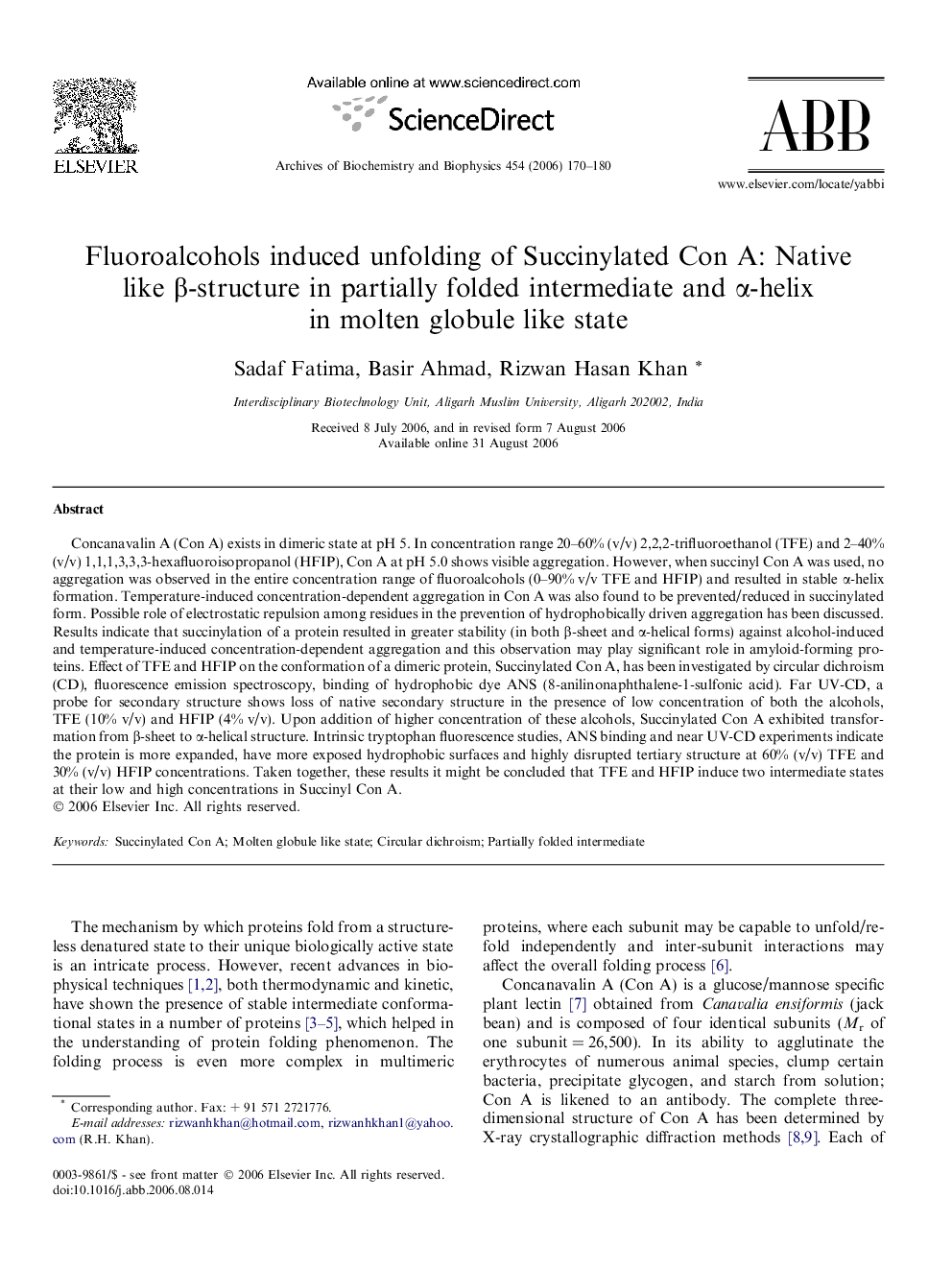| کد مقاله | کد نشریه | سال انتشار | مقاله انگلیسی | نسخه تمام متن |
|---|---|---|---|---|
| 1927455 | 1536517 | 2006 | 11 صفحه PDF | دانلود رایگان |

Concanavalin A (Con A) exists in dimeric state at pH 5. In concentration range 20–60% (v/v) 2,2,2-trifluoroethanol (TFE) and 2–40% (v/v) 1,1,1,3,3,3-hexafluoroisopropanol (HFIP), Con A at pH 5.0 shows visible aggregation. However, when succinyl Con A was used, no aggregation was observed in the entire concentration range of fluoroalcohols (0–90% v/v TFE and HFIP) and resulted in stable α-helix formation. Temperature-induced concentration-dependent aggregation in Con A was also found to be prevented/reduced in succinylated form. Possible role of electrostatic repulsion among residues in the prevention of hydrophobically driven aggregation has been discussed. Results indicate that succinylation of a protein resulted in greater stability (in both β-sheet and α-helical forms) against alcohol-induced and temperature-induced concentration-dependent aggregation and this observation may play significant role in amyloid-forming proteins. Effect of TFE and HFIP on the conformation of a dimeric protein, Succinylated Con A, has been investigated by circular dichroism (CD), fluorescence emission spectroscopy, binding of hydrophobic dye ANS (8-anilinonaphthalene-1-sulfonic acid). Far UV-CD, a probe for secondary structure shows loss of native secondary structure in the presence of low concentration of both the alcohols, TFE (10% v/v) and HFIP (4% v/v). Upon addition of higher concentration of these alcohols, Succinylated Con A exhibited transformation from β-sheet to α-helical structure. Intrinsic tryptophan fluorescence studies, ANS binding and near UV-CD experiments indicate the protein is more expanded, have more exposed hydrophobic surfaces and highly disrupted tertiary structure at 60% (v/v) TFE and 30% (v/v) HFIP concentrations. Taken together, these results it might be concluded that TFE and HFIP induce two intermediate states at their low and high concentrations in Succinyl Con A.
Journal: Archives of Biochemistry and Biophysics - Volume 454, Issue 2, 15 October 2006, Pages 170–180